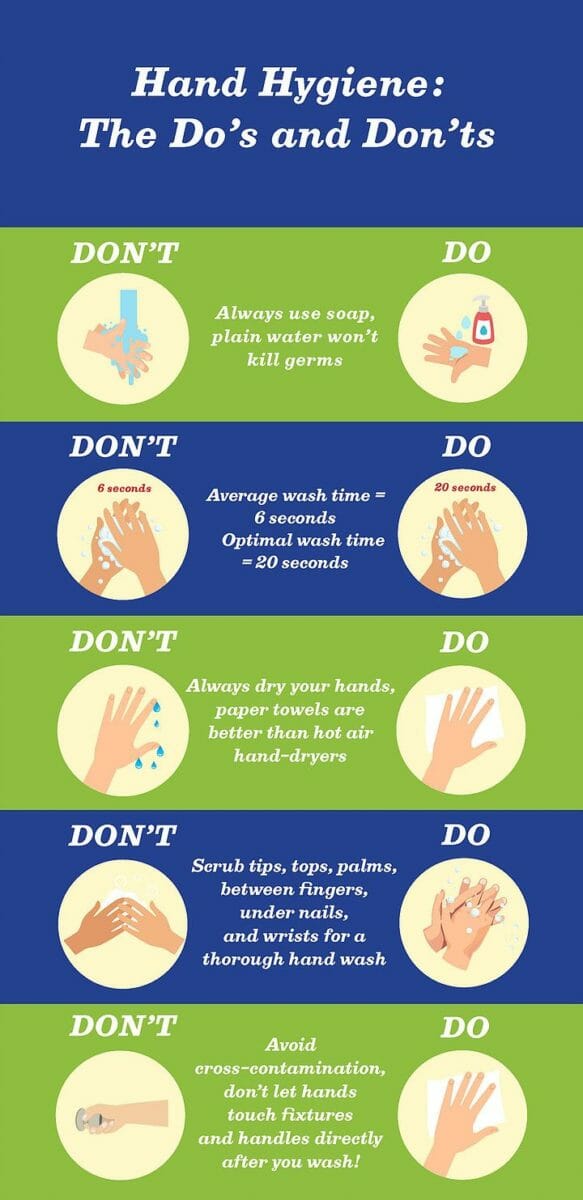Consider all the things people do in a day without thinking, tie their shoes, close the car door behind them, wash their hands after using the restroom… oh, wait, that is actually something people are NOT doing… at all. And many more are doing it incorrectly.
Although we know we should wash our hands, and although the CDC says proper handwashing is one of the easiest and most inexpensive ways to stop the spread of infectious disease and keep ourselves and our families healthy, only five percent of restroom users are practicing proper hand hygiene. That means 95 percent are doing it wrong! How could that be? It is easier than you think to wash your hands wrong.
Five common hand washing mistakes:
1) Sans soap. This almost falls into the same category as not washing your hands at all. If you are simply running your hands under the water (and often it’s a quick pass) without using soap you are not ridding your hands of germs and bacteria that can cause illness.
2) Time’s up (too soon). This is a biggie. Most folks believe a squirt of soap and a quick rinse will do the trick. Wrong! The average hand-washing time is six seconds, but the CDC recommends lathering up with soap and water for 20 seconds, about the time it takes to sing “Happy Birthday” twice, to really get your hands germ free.
3) Surface clean. In addition to not washing hands long enough, many just folks just do a surface wash, focusing just on their fingertips, for instance, or their palms. Tops of hands frequently go untouched and under fingernails are all but forgotten, making it the perfect place for bacteria to hide and spread. Again, the CDC suggests using those 20 seconds to scrub the tops, tips, palms, between fingers, under nails, and even your wrists.
4) Air drying. Bacteria is more likely to be transmitted from wet hands than dry hands, so taking the time to dry your hands after washing is an important step. If there is a choice between air hand dryers and paper towels, paper towels are the clear winner. Studies show they dry hands quicker, remove bacteria better and contaminate washrooms less.
5) Cross-contamination. Even if you avoid all of the mistakes above, if you wash your hands and then touch another contaminated surface, like a faucet, soap dispenser, or door handle, (especially if your hands are wet) you still risk picking up and transmitting germs and bacteria. The final step in a good handwashing regimen should include using a towel if you will need to touch other areas of the bathroom after you have washed and dried.
In some cases, businesses can contribute to the problem by not utilizing good hand hygiene services. When 50 percent of foodborne illnesses are caused by dirty hands, to offer anything less than the best puts whole communities at risk. That’s why at EnviroMaster, we offer a hand hygiene program designed to keep business restrooms clean. Contact us today to find out which option is right for you.


